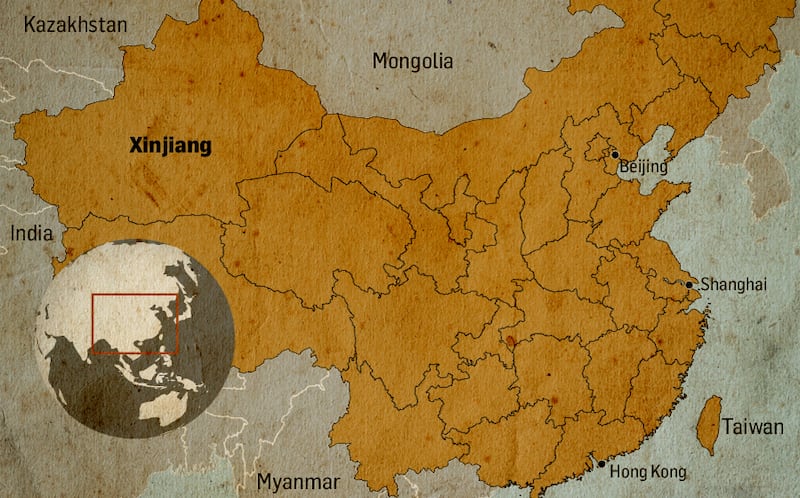Xinjiang – the name means "new frontier" or "new border" – is a province in northwest China that only became part of that country during the 18th century Qing dynasty.
Enormous in size (640,000 square miles), it is sparsely populated, with slightly less than 10 per cent of its mostly semi-arid area considered fit for human habitation. The people native to the region are Turkic, with the main ethnic group being the Uighurs. Most are Muslim, many are poorly educated, and many do not speak Mandarin.
Since the 1960s, there has been an increasing influx of people from the majority Chinese ethnic group, the (Mandarin-speaking) Han, such that they now constitute approximately half of the region’s estimated population of 22 million.

The most well-known route of the historical Silk Road that linked China to Central and Western Asia, and Europe, for centuries, ran through Xinjiang.
The region borders Mongolia, Russia, Kazakhstan, Kyrgyzstan, Tajikistan, Afthanistan, Pakistan, and India, as well as (China-controlled) Tibet. In recent decades, the discovery of oil and mineral reserves has made Xinjiang China’s largest natural-gas-producing region.
The Chinese government’s “Belt and Road” initiative, which has been envisaged as a modern version of the old Silk Road, has made Xinjiang important to Beijing’s aim of deepening China’s trade links with the world.
Belt refers to developing road and rail links, while road refers to developing maritime routes. The objective is to put what is now the world’s second-largest economy at the centre of the global trading network.
The Beijing government has said its campaign of repression in Xinjiang is aimed at an independence and separatist movement that has links with Islamic extremism. Some members of the Turkic population are said to have fought with the Islamic State terrorist organisation in Syria.













